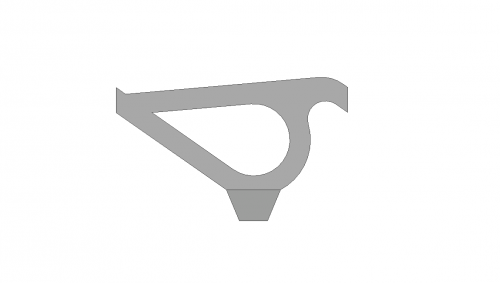Difference between revisions of "Design and Analysis of Modified Tesla Valve Geometry Implementation in a Filter Chamber"
(→Results and Discussion) |
|||
| Line 26: | Line 26: | ||
== Methodology == | == Methodology == | ||
| + | '''1. Outline of Process''' | ||
| − | |||
| − | '''Tesla Valve Geometry''' | + | '''2. Software Used''' |
| + | |||
| + | There are mainly 2 softwares used in this research which is to make the tesla valve geometry and to simulate the geometry in a CFD environment. | ||
| + | |||
| + | '''a. Geometry Modelling''' | ||
| + | |||
| + | |||
| + | |||
| + | '''b. CFD Simulation''' | ||
| + | |||
| + | |||
| + | |||
| + | '''3. Tesla Valve Geometry''' | ||
| + | |||
| + | Below is the geometry created for this research, | ||
[[File:Screenshot 2020-12-22 140732.png|500px]] | [[File:Screenshot 2020-12-22 140732.png|500px]] | ||
[[File:Screenshot 2020-12-22 140752.png|500px]] | [[File:Screenshot 2020-12-22 140752.png|500px]] | ||
| + | |||
| + | |||
| + | '''4. CFD Simulation Model''' | ||
| + | |||
| + | |||
| + | '''5. Fluid Properties and Boundary Conditions''' | ||
| + | |||
| + | |||
| + | '''6. Parameters to be Analyzed''' | ||
| + | |||
| + | |||
| + | == Results and Discussion == | ||
| + | |||
| + | |||
== Conclusion == | == Conclusion == | ||
Revision as of 14:19, 22 December 2020
Contents
Introduction
Inertial seperators are devices that are used to filter particulates from the flow of gas going through the system by changing the direction of motion of the flow (Clift, 1997). The flow direction of motion is changed through use of various geometric designs such as baffles, cavities, cross section area changes, and so on. Through sudden introduction of these geometric designs, forces in the gas will concentrate the flow of particles to specific part of the gas flow which can be then seperated in chambers or other filtering surfaces. And so, Intricate design of these geometric structures inside the seperators play important role in increasing the overall efficiency of the filtering system.
The tesla valve is a fixed-geometry check valve which allows for one direction flow of fluid going through without use of any moving parts. As it allows unobstructed flow from one direction, various geometric structures inside the valve blocks the flow greatly by rearranging the flow to block one another hence resulting in great resistance.
This research aims to find the feasibility of similar tesla valve geometries for implementation in filetring systems.
Objective
- Design a geometry based on the tesla valve for gas-solid flow seperation purposes
- Simulate said geometric design through transient, subsonic, Incompressible, and LES configuration CFD simulation
- Analyze the feasibility of tesla valve based geometry in filtering through parameters including (1) efficiency in filtering, (2) range of particle sizes effective to be filtered, (3) flow patterns, and (4) number of segments
- Verifying the result based on a grid independece study to ensure a small margin of error
- Validate results through various other similar studies
Methodology
1. Outline of Process
2. Software Used
There are mainly 2 softwares used in this research which is to make the tesla valve geometry and to simulate the geometry in a CFD environment.
a. Geometry Modelling
b. CFD Simulation
3. Tesla Valve Geometry
Below is the geometry created for this research,
4. CFD Simulation Model
5. Fluid Properties and Boundary Conditions
6. Parameters to be Analyzed
Results and Discussion
Conclusion
References
Clift, R. (1997). Inertial separators: basic principles. In Gas Cleaning in Demanding Applications (pp. 41-52). Springer, Dordrecht.




